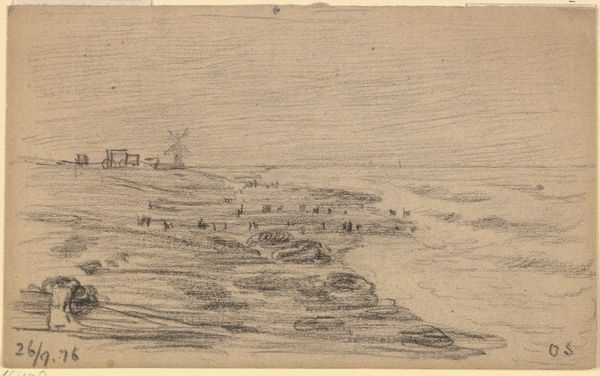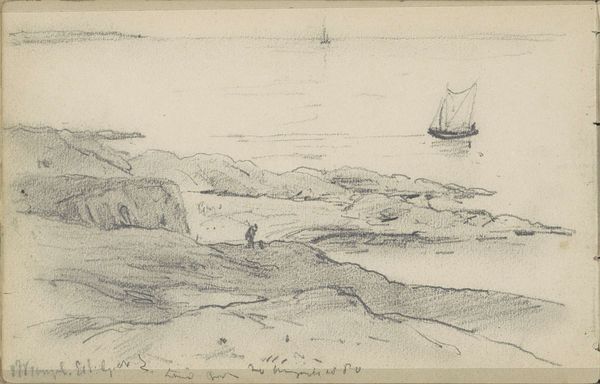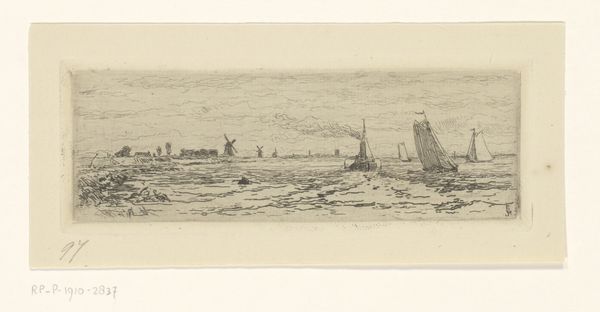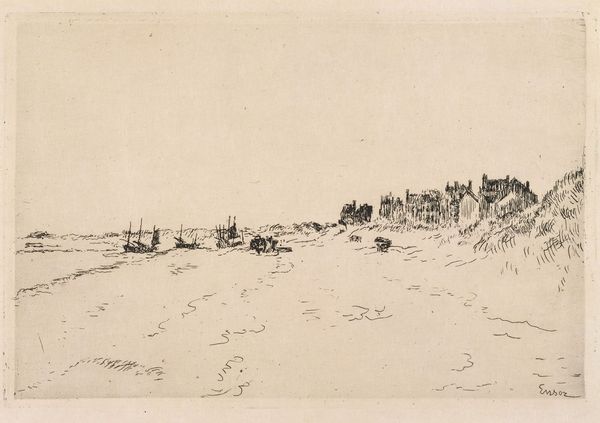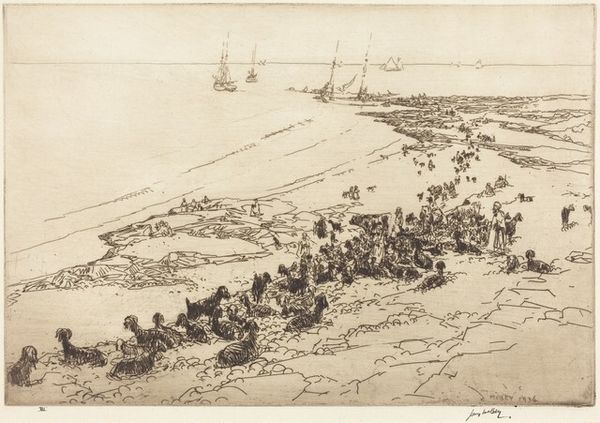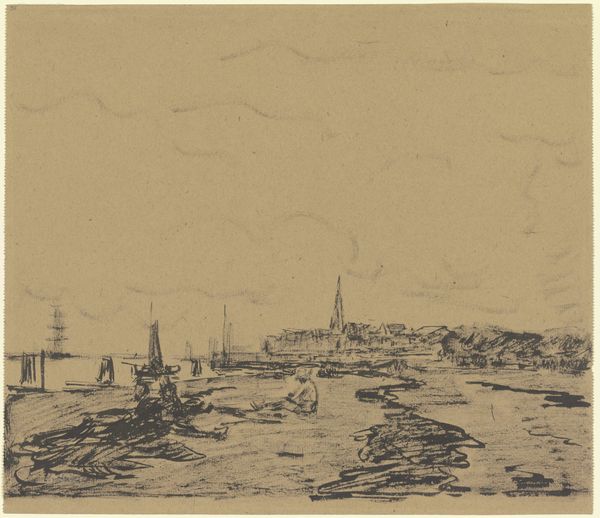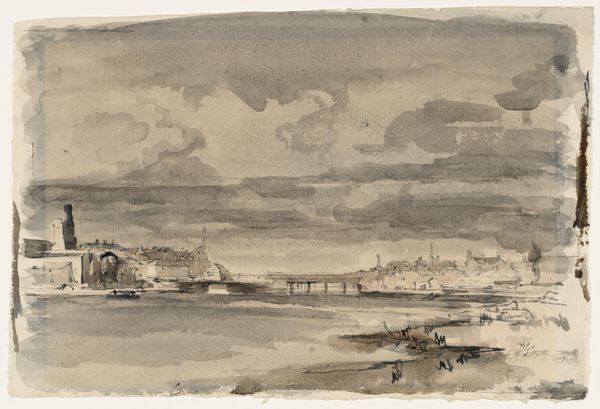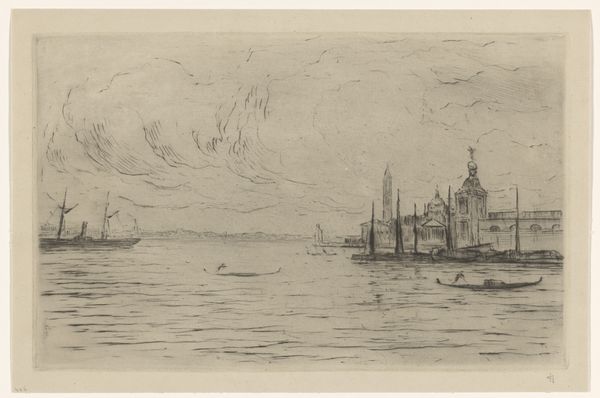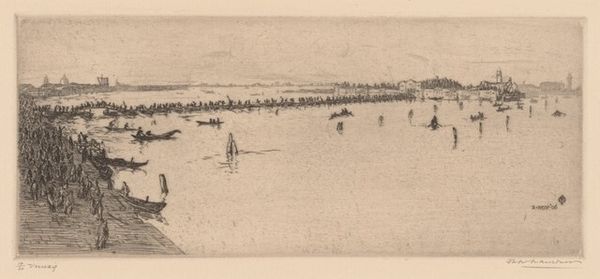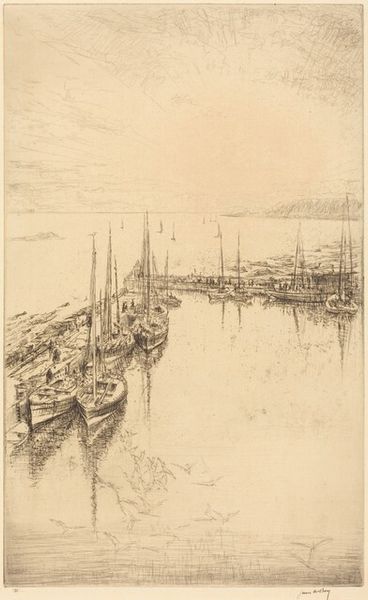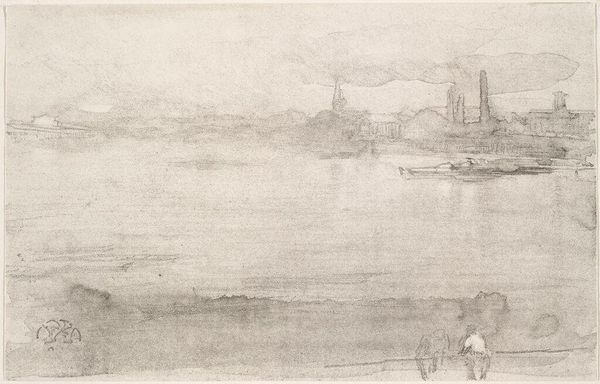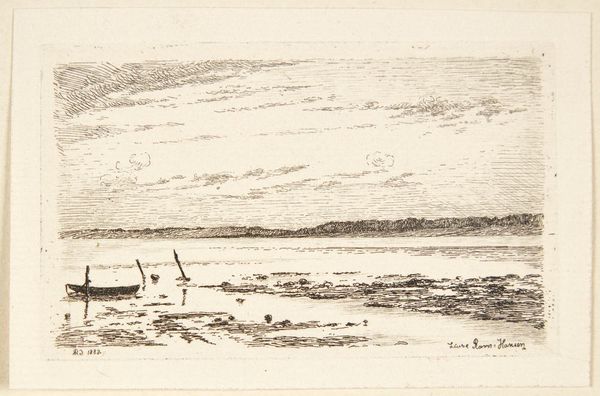
drawing, print, etching, ink
#
pen and ink
#
drawing
#
ink drawing
# print
#
etching
#
landscape
#
etching
#
ink
#
realism
Copyright: National Gallery of Art: CC0 1.0
Curator: I find myself immediately drawn into the stillness and solitude of this landscape. There’s an undeniable sense of quietude rendered with remarkable precision. Editor: Indeed. We’re looking at James McBey’s 1942 etching, "The Morgan at Mystic," a striking example of his masterful handling of line and light, particularly in the intricate layering of tones created by his ink work. The eye is immediately directed to the detailed textures he crafts using the etching technique. Curator: The realism of the composition strikes me, the rough shoreline rendered so delicately it almost feels like it’s beckoning us. The meticulous detail almost feels overwhelming, but is broken up by the softness in the clouds that float above the scene. Editor: One can’t overlook that dominating presence of the ship itself. McBey was an official war artist, after all. The inclusion of the ship hints at themes far greater than a quiet maritime scene, doesn't it? The contrast of fragility with the solemn acknowledgement of colonial and imperial history that often follows tall ships is an inescapable juxtaposition. Curator: That tension is compelling, and very visible in how McBey directs the gaze—the careful balance of the immediate foreground elements with the implied depth behind it, emphasizing spatial relationships, and suggesting the infinite potential space as an illusion that the ship threatens. The semiotic weight he assigns is subtle yet poignant. Editor: He uses that subtlety powerfully, doesn’t he? In this particular work, he is drawing upon a moment fraught with tension, where ideas of tradition stand against inevitable societal change, speaking to post-colonial theory, ideas of identity, globalization and change that we can certainly read into how space is managed here. Curator: Thank you. On a personal level, I’ve newly noticed elements I hadn't consciously processed before—particularly that almost untouched sky that offers balance and relief. It offers me a sense of respite that invites a return to the image time and again. Editor: I agree, returning again really is an exploration in uncovering both an artful balance, but a crucial look into social structures from McBey’s perspective. It feels particularly potent, considering both world wars loomed so close to this date.
Comments
No comments
Be the first to comment and join the conversation on the ultimate creative platform.

